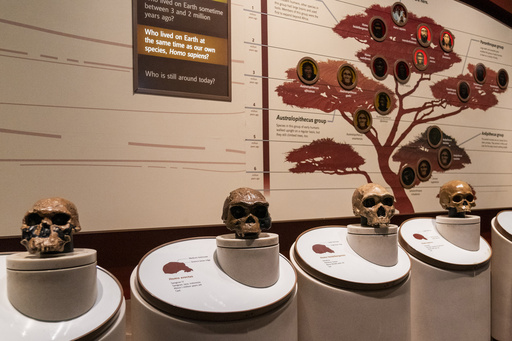Why did humans develop the ability to speak? Researchers suggest that genetics played a significant role in this evolution, which has been pivotal for our survival. A recent study has established a connection between a specific gene and the ancient roots of spoken language, indicating that a unique protein variant present only in humans may have fostered new forms of communication. The ability to speak allowed early humans to exchange information, organize collective tasks, and transmit knowledge, granting them advantages over extinct relatives such as Neanderthals and Denisovans.
This study represents “a promising initial step” towards identifying the precise genes that may influence speech and language development, according to Liza Finestack from the University of Minnesota, who did not partake in this research. Understanding these genetic factors may eventually lead to improved treatments for individuals with speech-related difficulties.
The gene variant explored in the research is among several that played a role in the rise of Homo sapiens as the dominant species today, according to Dr. Robert Darnell, one of the researchers behind the study, which was recently published in the journal Nature Communications. Darnell has investigated the NOVA1 protein, crucial to brain development, since the early 1990s. For this particular study, his team at Rockefeller University in New York employed CRISPR gene editing techniques to substitute the NOVA1 protein in mice with its human equivalent to observe any resulting changes in vocalization.
Unexpectedly, the results revealed modifications in how the mice vocalized when they interacted with each other. Baby mice carrying the human variant produced distinct squeaks compared to their normal siblings in response to their mother’s presence. Additionally, adult male mice with this variant showcased altered chirping patterns compared to typical males when encountering an estrous female. Darnell noted that these observations arose in scenarios where the mice naturally would communicate, demonstrating the influence of the human protein variant on vocal behavior.
This isn’t the first instance where a gene has been associated with speech capabilities. In 2001, British scientists announced the discovery of the FOXP2 gene, linked to speech and language disorders, leading it to be dubbed the “human language gene.” However, while FOXP2 plays a role in human communication, the variant found in modern humans was not exclusive, as subsequent studies revealed it was also present in Neanderthals. In contrast, the NOVA1 variant identified in contemporary humans is unique to our species, according to Darnell.
Nevertheless, possessing a specific gene variant is not the sole factor enabling speech. The anatomical structure of the human throat, along with the collaboration of specialized brain regions, is essential for speech production and comprehension. Darnell aspires for this research not only to shed light on human linguistic origins but also to lead to innovative treatments for speech-related disorders.
Finestack acknowledged that these genetic insights might one day help researchers detect early in life those at risk for speech and language challenges, suggesting a promising avenue for early intervention.


